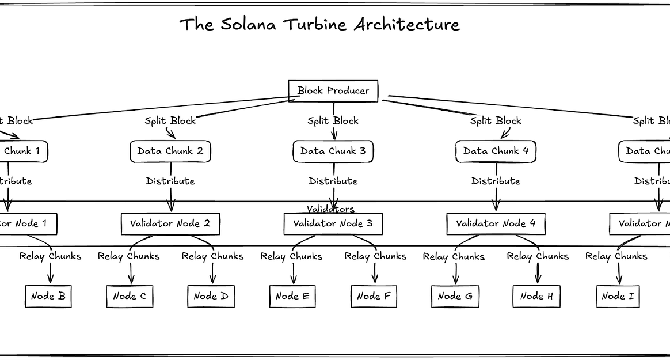Hackernoon
2w
156

Image Credit: Hackernoon
Solana’s Block Propagation Problem Was Huge—Here’s How They Fixed It
- Block propagation is a key process in blockchain networks, but traditional methods face scalability challenges as networks grow in size.
- Solana addressed slow block dissemination by introducing Turbine, a multi-layer mechanism that breaks blocks into smaller parts for more efficient distribution.
- Turbine, inspired by BitTorrent, optimizes streaming by using data chunking and UDP transmission for latency benefits.
- Erasure coding with Reed-Solomon is applied to shreds in Turbine to protect against data loss and ensure data availability.
- Shreds, as atomic units, are sent between validators, enabling swift and efficient block data distribution in Solana.
- Confirmed blocks have the supermajority of ledger votes, while finalized blocks are confirmed with 31+ built on top.
- Turbine Tree, a structured network topology, aids in propagating shreds through a 2- or 3-hop tree to inform validators of the latest state.
- Nodes may resort to gossip and repair in case of missing shreds or loss exceeding the FEC rate to ensure efficient data transmission.
- Solana uses a dynamic FEC rate to adapt to network conditions and reduce the impact of network-wide packet loss during block propagation.
- Turbine's approach enhances Solana's ability to maintain high throughput and network security while efficiently disseminating block data.
Read Full Article
9 Likes
For uninterrupted reading, download the app